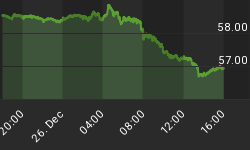Fiat money is not directly convertible into a physical commodity at a specified amount. It is a type of credit money through which a central bank issues notes in exchange for interest-paying bonds by the government. The interest on these bonds is paid by the government primarily through the process of taxation. That is to say, by you and me.
Since the interest plus the principle always exceeds the initial amount borrowed, the government must continually borrow more money, at additional interest, in order to repay the central bank, thus beginning an ever-increasing spiral of debt.
Eventually, the system collapses once the fiat money becomes worthless when the government is unable or unwilling to support its value through taxation. Until then, the government creditors are able to accumulate extreme amounts of wealth.
"By a continuing process of inflation, government can confiscate, secretly and unobserved, an important part of the wealth of their citizens." (John Maynard Keynes, chief architect of the modern-day economic system)
All modern currencies are fiat money. The US dollar was the sole currency of the world linked to gold following the events of World War 2. It was agreed to during the Bretton Wood Agreements made in July 1944 that all currencies would trade against the US dollar within a defined trading band. Countries would maintain their currency within this trading band by purchasing or selling US securities. Only the US dollar was directly convertible to gold at the rate of US$35 to the troy ounce.
The reasons for the acceptance of the US dollar as the 'anchor currency' was because American soil was largely untouched by destruction from the war leaving most of her manufacturing capacity intact, the arrival of the atomic bomb, and that US vaults held an estimated 65% of the world's gold reserves.
By the late 1960's, nations around the world became increasingly concerned about the ability of the United States to keep the price of gold at US$35 given America's involvement in the Vietnam War and spiralling costs for Lyndon B. Johnson's Great Society programs.
By 1970, the US gold reserve had shrunk to 16% of the world total and the US trade balance swung negative for the first time. On August 15, 1971, President Richard Nixon unilaterally "closed the gold window" effectively taking the US dollar off the gold standard.
The following graphs show the dramatic declines in the values of paper money. The Swiss Franc was the best-performing currency of the 20th century, losing only 80% of its value.




One must wonder if it can be said that currencies float against one another. It appears to be more of a case of them sinking at different rates.
















